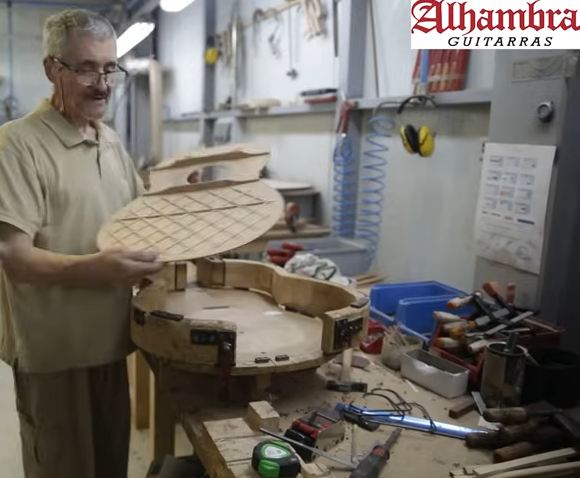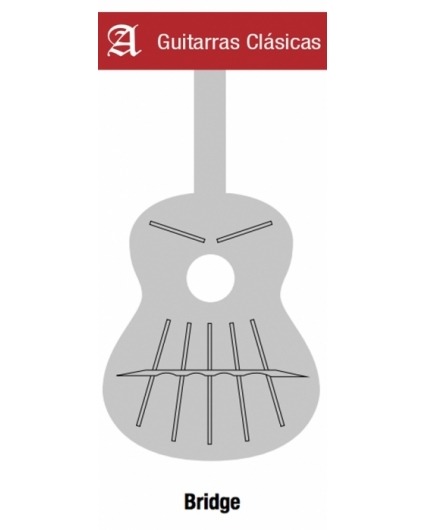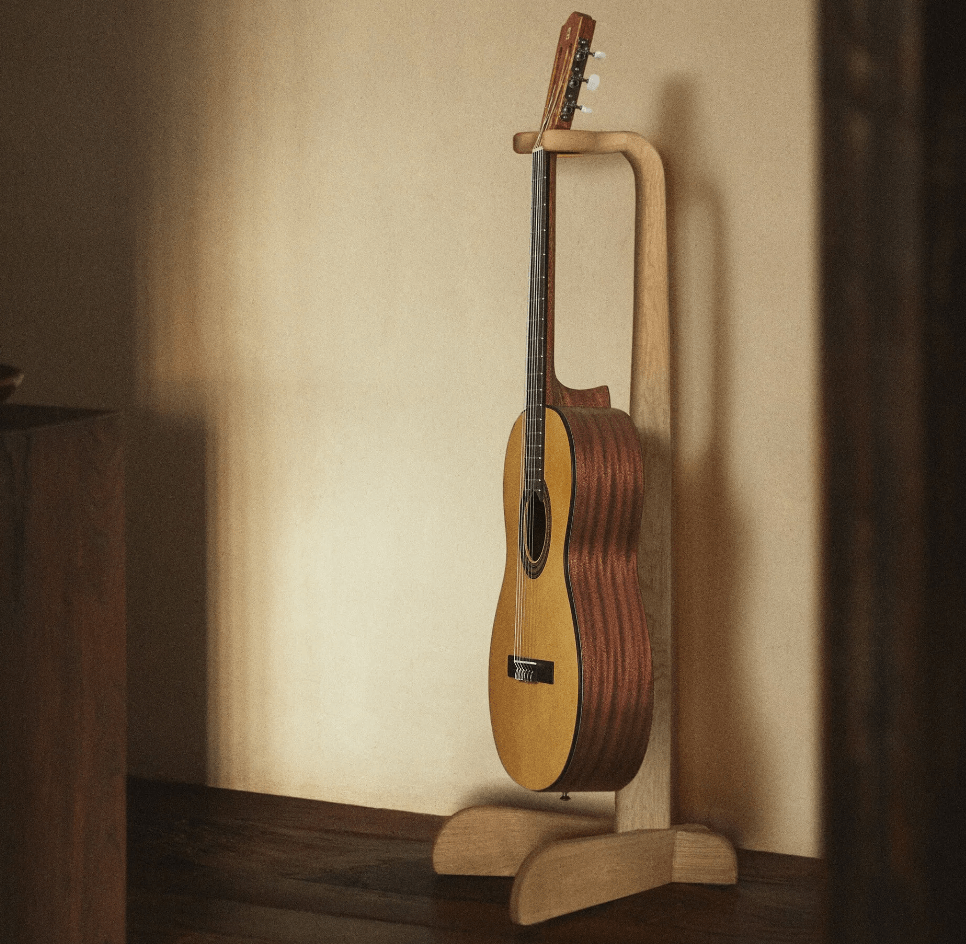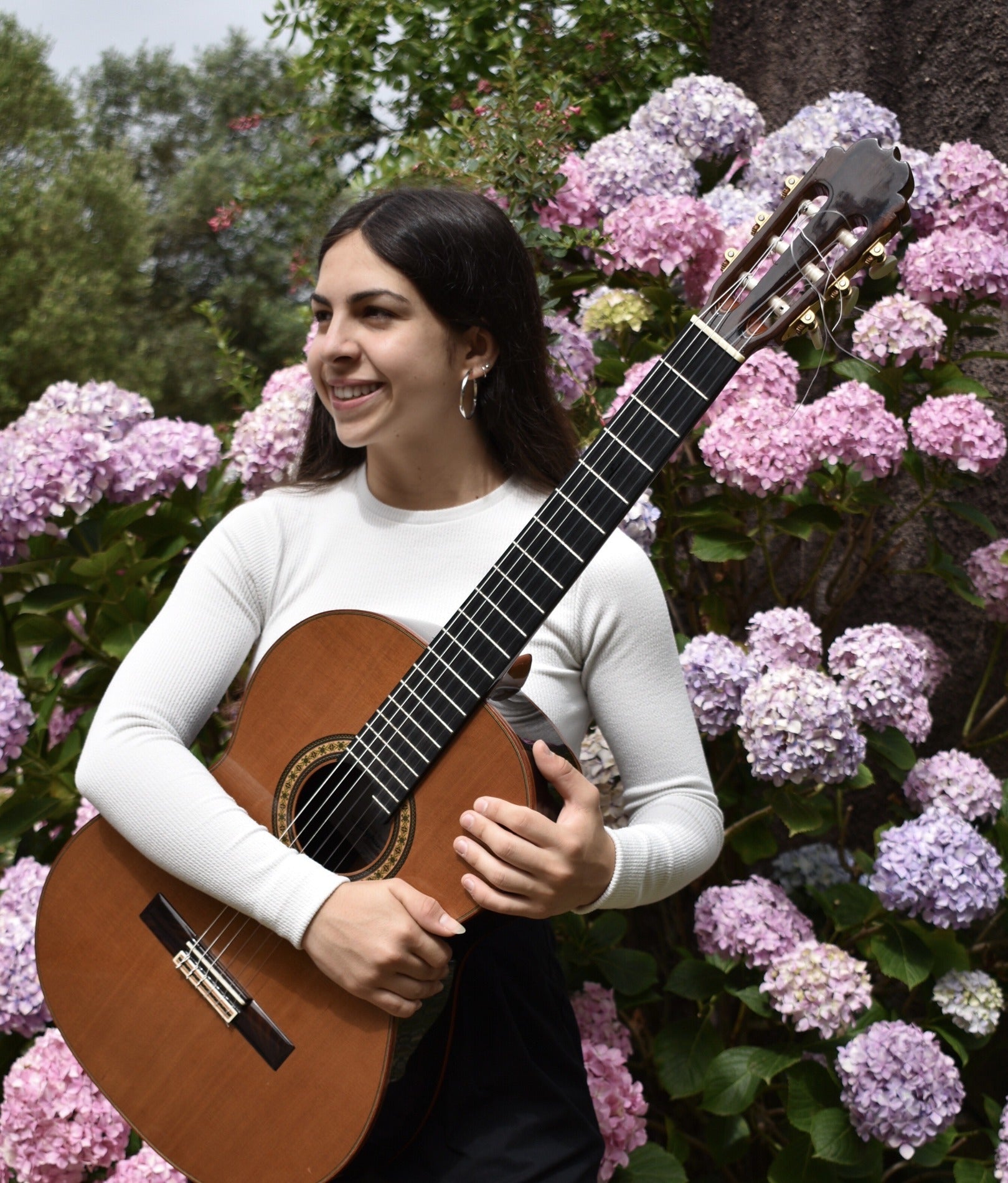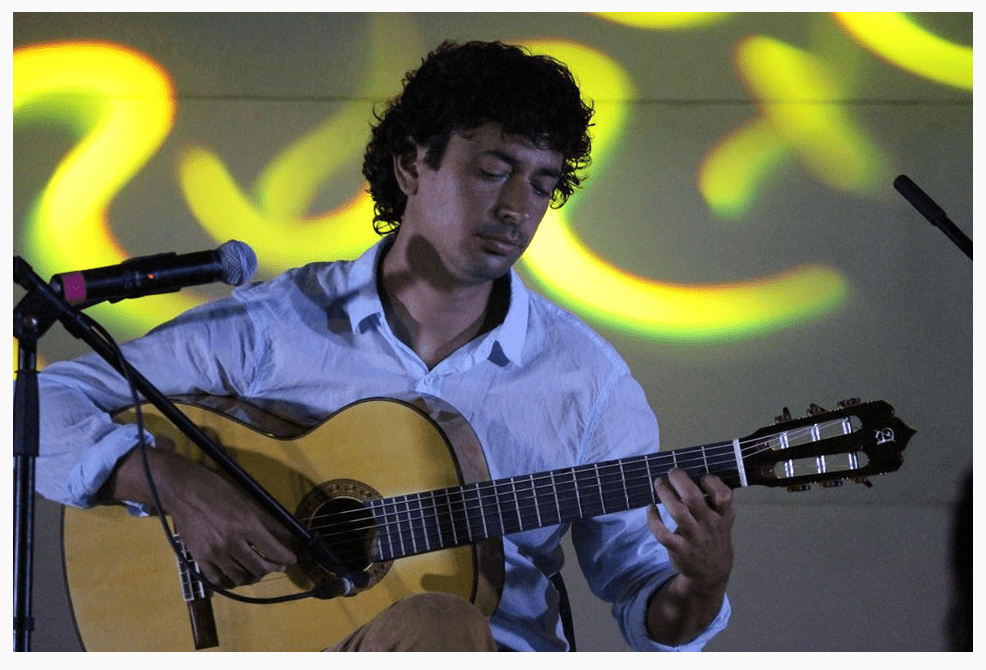
Classical Guitar Bracing: A Journey Through Its Acoustic Secrets
Since the mid-1950s, luthiers around the world have been experimenting with different bracing designs on classical guitars.
Before this era, guitar models had followed a fairly uniform pattern since Antonio de Torres established a basic design with a specific bracing, considered "traditional." However, with the rise of the classical guitar and its virtuoso performers in the 1950s, the need arose to improve the guitar's sound in terms of volume, projection, and presence in large audiences.
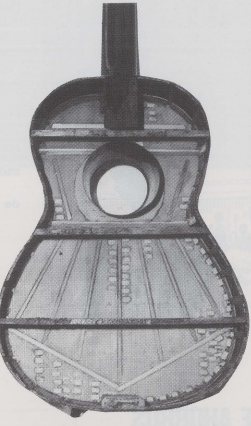
"Guitar by Antonio de Torres with soundboard, Seville 1864. See the bracing system and the three bars in the background. Some bars have been replaced and the red ones on the top reinforced with sheets of wood. Property F. Godia Sales. Barcelona. Photograph by J. Massó."
The most revolutionary change in guitar bracing design was the introduction of the "underbridge" by Robert Bouchet around 1956. This innovative concept involved adding a cross brace beneath the bridge, spanning the width of the guitar and fanning out the braces. This change had a significant impact on the guitar's vibration and sound, balancing the longitudinal and transverse oscillations of the soundboard, improving tonal quality, and enhancing the instrument's projection.
Understanding Bracing
Bracing refers to the set of wooden bars placed inside the soundboard of a classical guitar to reinforce and shape its sound. It influences the guitar's vibration, resonance, and tone, so its design and arrangement are very important.
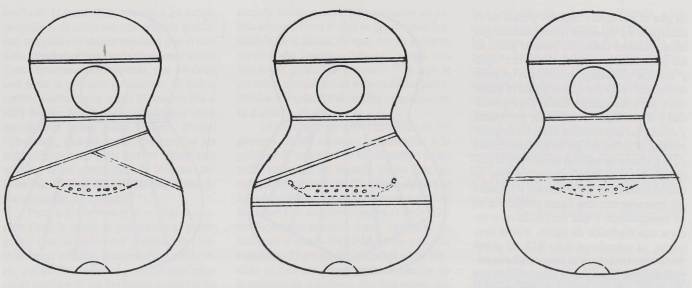
«French guitars of the 19th century. Details of the bracing of the tops. The one in the center is a Lacote made in 1852. The illustrations have been taken from the article «Aspekten van de gitaarboun» by Jürgen Winter and «Els Jageneau» in Voksmuziekatelier Jaarboek IV, Belgium 1986»
Materials, Profiles and Length of the Rods
The bracing of a modern guitar can be made of a variety of materials, with wood being the most common. Woods such as spruce, Canadian cedar, and mahogany are used, each with its own characteristics of density, weight, and strength that affect the soundboard's mobility.
The profiles of the rods They vary depending on the builder and can influence the resulting sound. The height of the braces is more important than their width in terms of strength. Tuning the braces is essential, as it affects the tonal response of the top.
The length of the rods It also plays a crucial role in producing the guitar's sound. Longer frets produce higher bass frequencies, while shorter frets generate higher frequencies.
The bracing of a classical guitar is usually mainly of two types:
-
Fan-shaped bracing: This is the most common type, with three ribs curving from the center of the lid to the edges, arranged in a fan shape.
-
Parallel Bracing: Less common, with two rods extending from the center of the lid to the edges, arranged in parallel.
Fan bracing It is most commonly used in classical guitars because it provides greater strength and rigidity to the soundboard, allowing it to vibrate more freely, producing a more resonant sound with more sustain.
Parallel bracing It is used less, because it does not provide the same resistance and rigidity, although it can generate a brighter sound with more attack.
Listed below are some of the factors to consider when designing the bracing of a classical guitar:
-
Soundboard Wood: The type of wood used has a significant impact on the sound. Denser woods, such as spruce, produce a more resonant sound with more sustain, while lighter woods, such as cypress, produce a brighter sound with more attack.
-
Guitar Size: The size of the guitar also affects the sound. Larger guitars have a larger soundboard, producing a more resonant sound, while smaller ones generate a brighter sound.
-
Bracing Type: The type of bracing used also influences the sound. Fan bracing produces a more resonant sound with more sustain, while parallel bracing produces a brighter sound with more attack.
-
Bracing Layout: The bracing arrangement also impacts the sound. The placement of the rods affects how the soundboard vibrates.
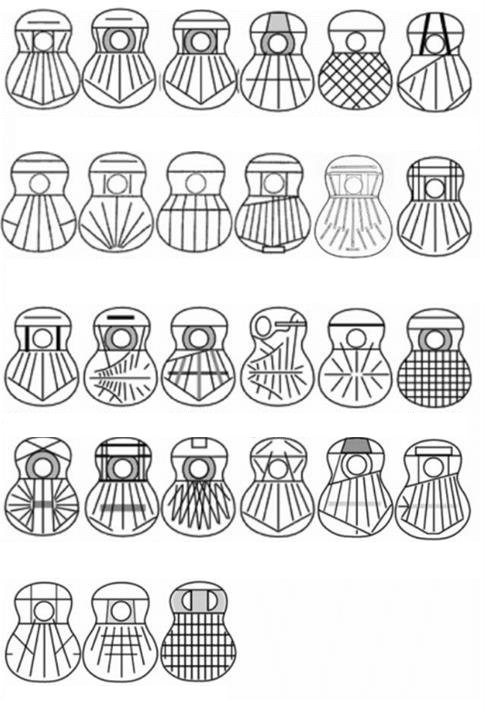
Classical guitar bracing has undergone significant evolution over the years, from its early days to the most recent innovations. This seemingly simple component plays an essential role in producing the guitar's sound and remains an area of exploration for guitar makers around the world.
Frequently Asked Questions
What role do the rods play in the vibration of the soundboard?
The braces on a guitar play a fundamental role in the vibration of the soundboard. They help control and strategically direct the vibrations generated by the strings, acting as structural reinforcements that influence the distribution of vibrations. Their arrangement and design impact how the soundboard responds to sound frequencies, thus contributing to the timbre and projection of the guitar's sound.
What woods are commonly used in classical guitar bracing?
High-quality woods are commonly used in classical guitar bracing. Spruce, in its various forms such as German spruce, Engelmann spruce, and Sitka spruce, is a popular choice due to its density, weight, and strength suitable for bracing. In addition to spruce, other woods such as Canadian cedar and mahogany are also used. The choice of wood can influence the tonal and resonant characteristics of the guitar.
How do fret profiles influence the sound of a guitar?
Bracing profiles have a significant impact on a guitar's sound. The shape, height, width, and profile of the braces can affect how the soundboard vibrates and responds to sound frequencies. For example, taller braces tend to produce more bass frequencies, while shorter braces can contribute to higher frequencies. Builders adjust these profiles to achieve the desired tonal quality and balance in the guitar's frequency response.
Why is it important to tune the braces when building guitars?
Tuning the braces in guitar building is essential for achieving high-quality sound and a balanced tonal response. Each brace has a specific function in distributing vibrations across the soundboard, and tuning them involves adjusting their height and profile to influence the sound frequencies the guitar produces. Precise tuning of the braces allows the luthier to achieve optimal sound, improve projection, and ensure the guitar delivers exceptional tonal performance.

